9 Types of Can Openers for Safer, Faster, & Easier Cooking
Author: Anne Cowart | Editor: Omar Alonso
Review & Research: Jen Worst & Chris Miller
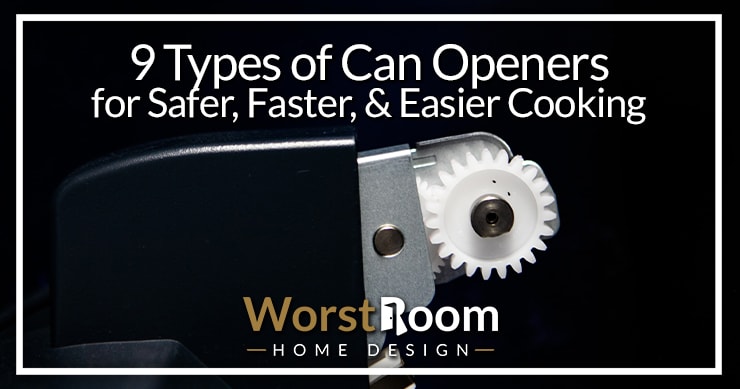
There is a huge variety of cans on the market. Sometimes you even need different types of can openers for each of them. Some are harder to use, leave jagged edges, and cause you to make a mess. But some don't!
You might be familiar with a few of them, but you may not have heard of some that can do the job better, cleaner, and can handle all of the can lid styles. Let’s take a look at some of the most common and popular varieties.
9 Types of Can Openers
We're not listing these in any particular order so please scroll through and check out the pictures, because there's bound to be something more luxurious than you expect. What you want is one that's easy to use, keeps you safe, and saves your time.
Single Wheel Can Opener
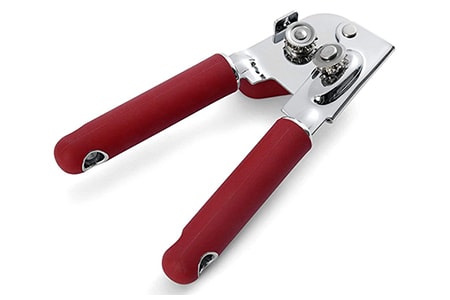
This one is also much like the bunker can opener with its design and the way it works. Except this one has a magnet that keeps the lid in place. You need one with a strong magnet or you'll have problems with the opener slipping away from the can.
It's a great tool for those who struggle while opening a tin can with openers that give you a can with sharp edges that are unsafe. The single wheel opener makes sure the can is opened in a quick, safe, and easy manner.
That's possible because of the grate that cuts open the can with an even finish. The job of the magnet is to hold the can firmly while the wheel cuts through the rim. Attach the opener to the lid of the can and place the wheel as close to the rim as possible.
Then use the key to turn the wheel and the job is done. The magnet and the smooth and even finish are clearly the best parts of these can opener types. But it's not a great tool if you can't figure out how to work it. It's confusing the first time!
Lever-Type Can Opener
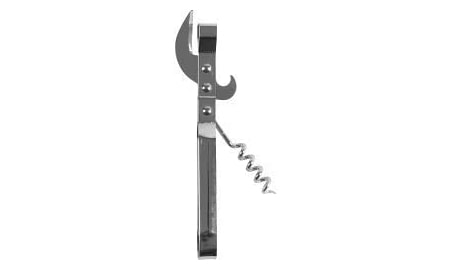
Also called the claw-type opener, this one is named after its shape. The lever can opener is one of the more basic models out there. It's an old model and is often used to slice open a can. It has a blade in the shape of a sickle that cuts through the lid to open it.
It also has a curved blade on the opposite side with a shield that stops the blade from cutting too deep. That way, the blade never comes in contact with the contents of the can. These are very common types of can openers, ones that I've had all throughout my life.
You can use it to saw along the edges of a container with sharp edges. The only downside is that the sharp blade can hurt your fingers if you're not careful. These are the least sophisticated and luxurious of the types of manual can openers.
Butterfly Can Opener
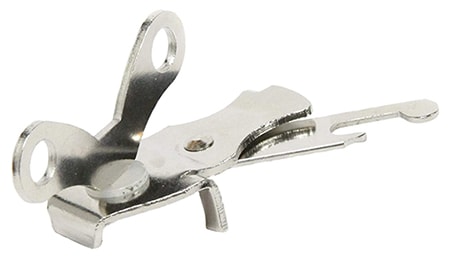
Then there's another manual can opener that works like a bunker opener. This one has a rotating cutting wheel which helps you break the top of the can while you hold on to the lid. You spin the key to open the can, which causes the can to rotate in your hand.
The butterfly can opener also has a key and tongs that aides the wheel of the opener in moving. It also makes it easy for you to work the can opener if you need any help.
You start by puncturing the lid with the pointy end of the key and secure it with the tongs. Then you use the sharp wheel to cut through the lid by cranking the lever.
This is a bit more complicated compared to the claw opener. On the bright side, it does its job like a professional. The downside is that some people find it a bit complicated to use, especially those with weak hands.
These manual can opener types can be found in most kitchen drawers, so you're probably familiar with them already. Time for an upgrade!
Electric Can Opener
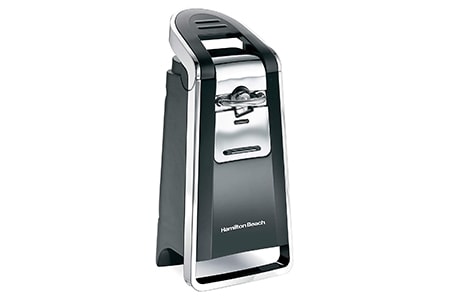
The very first electric can opener was invented in 1931. The idea was to make sure there was as little human effort as possible, and they all still offer this same convenience even though there are tons of different can openers of the electric type.
Electric can openers are very easy to use because all you need to do is press the button or even just flip a switch, depending on the model. It doesn't get any easier than that. Electric types of can openers offer the most convenience of all of them. They're like the luxury model.
You can get a cabinet model or a free-standing countertop model which are the two major types. Most of them have magnets that do the job just like the single wheel opener. You just need to ensure that the can is under the opener before the whole rotation business begins.
Once it does, the lid is cut open in only a few seconds. You'll have to make some space on the countertop for these can opener types but they work really well for those who don’t have a good grip in their hands or upper limbs.
The disadvantage is that they're expensive compared to the manual varieties, but not really that pricey at this point. They're a practical solution to an everyday problem. Those with joint pains or are in a rush in the kitchen really prefer these models.
They can easily cut the lid of a can with very little effort and give you what you need within a few seconds. They also leave the edges smooth and protect you from untoward injuries. That's probably what makes them one of the top-rated kitchen appliances.
Electric can openers are for people who like their kitchen smart. The design is updated quite often making it even more of a practical purchase if you stick to the newer models.
Countertop Can Opener
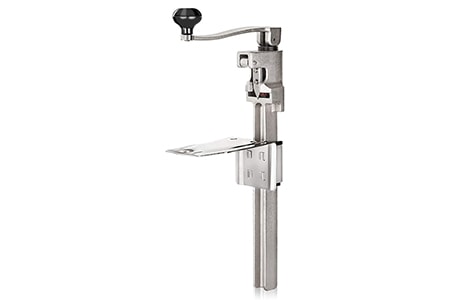
This one is specially designed to open a can on a kitchen counter, especially with restaurant sized cans. Countertop openers have a vacuum base or some other way of mounting it so that you can lock the can on the countertop. Yes, there's no monkey business here.
The best thing about these openers is that apart from regular cans, they can be used on pop-top cans too. They're really good when it comes to cutting the side of a can and leaving it open with a super smooth lid, keeping your fingers safe.
In our experience, the best tools not just do the job but also think of how to avoid the aftershocks. It's very easy to use different can openers, but perhaps these more so.
You just need to use light touch and you have an open can. But for that, you must first secure the opener in place and hold the base of the can firmly. Find the knob with your free hand and turn it. At the same time, you will see the wheel on the opener cut the lid and produce an open can for you.
Church Key Can Opener
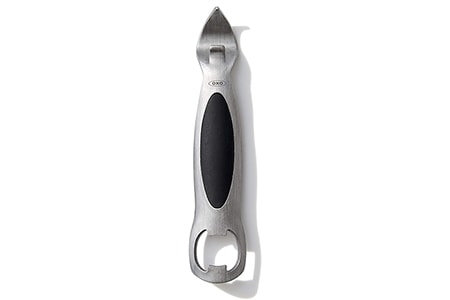
This one is popular among campers and those who drink bottled beverages. The church key opener is incredibly easy to use because of its simple design. It's a basic hand-operated opener that's used to open the bottle cap of a glass bottle and punch through can lids.
It's been in use since it was invented in 1892 and is made with a single piece of pressed metal. It has a pointed edge that pierces the lid but you must secure the guard at the edge first. Among all of them, this is the old fashioned can opener that's sadly becoming more rare.
Then you puncture the lid using the pointed edge by tilting it forward, causing it to poke through the top. Lift the opener in rapid movement and you'll see the pointed part rip through the can's top.
This too has the disadvantage of hurting your fingers if you are not careful. It's also only really useful for cans that contain liquid. If the contents are bulky, like beans as an example, this won't do you any good other than draining it out first. These are good to have around in your prepper food storage closet, though.
Tin Can Key Can Opener
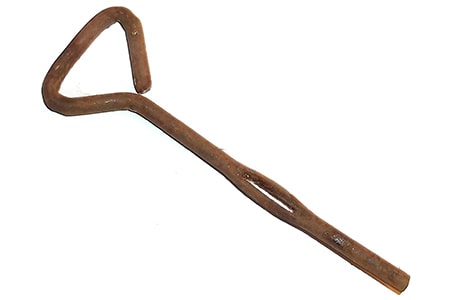
The name itself tells you that key openers look a lot like door keys. They have a single twisted piece of metal which is great for cans with thin walls. You need to attach the opener to the container securely to get the job done.
Key openers are also extremely easy to use and you don’t need storage space once you are done with them. Realistically though, these are only good for cans with this lids like spam cans. Most people won't find any use for these in their life, ever, since spam cans have their own key attached now.
Start by attaching the opener to the lid of the can and puncture it with the sharp edge of the opener. Twist it in a particular direction to tear one side of the can. Later on, roll up the lid by spinning the key can opener and there you have it.
Their size is obviously the biggest advantage with key openers. And they're easy to use. But like many others, they too have pointy edges that could hurt your fingers. And they're not really convenient types of can openers.
These aren't useful any more because cans are no longer designed to be used with them, especially with built in strips that can be rolled up.
Bunker Can Opener
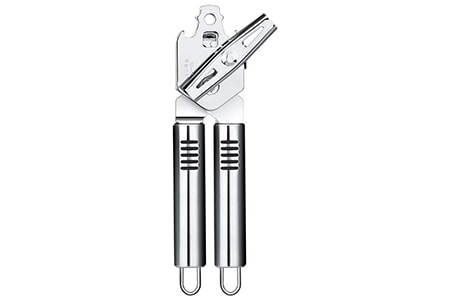
This is possibly the most common type of can opener. The handles of a bunker opener look much like cutting pliers and there is a serrated wheel and a key too. When you put it all together, you get a machine that opens any can smoothly and quite easily.
The first step is to use the bunker to grip the can effectively with the help of the pliers. Then you must crank up the key and let the wheel rotate and slice through the top of the can.
The advantage is that you can use this with one hand and it is quite easy to operate a bunker opener. The newest bunker can openers are pretty much the same as the single wheel variety now.
Side Can Opener
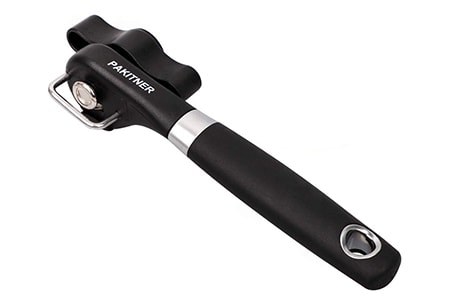
Then there is the side can opener which came into existence in the 1980s. This one uses a cutter and a roller wheel that cuts the side of the can below the rim instead of cutting downwards on the top.
Unlike all the other openers we've talked about, this one does not cut the lid of the can resulting in the removal of the rim. The way this works, the rim and the top of the can both are totally removed. So, you must pick and use a side can opener wisely.
These openers also have a serrated wheel and a cutting wheel. It helps you with better grip while you're slicing through the top of the can. This is also meant to fold the outside of the rim which keeps the edges smooth and minimizes the possibility of injuries.
To its credit, this is a relatively innovative design that slices off the entire top of the can. The only downside is that some folks find it a bit complicated to operate. But sometimes it's just a matter of getting used to it, right?
Bonus Type: P-38 and P-51 Can Opener
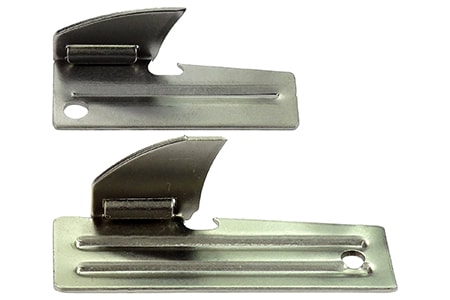
Designed in 1942, the P-38 and P-51 can openers were issued along side field rations that came in cans. They were used in World War II all the way through the 1980's, distributed with the K-ration and C-ration. The Marine Corp calls these a "John Wayne" because they're so tough and dependable. You can carry these on a key chain or on your dog tags like the soldiers did.
Types of Can Openers for Can Design
In the 21st century, there's a tool to get every job done. Sometimes all it takes is finding it and your life becomes extra easy.
Definitely spare a few minutes and find them. There is no downside to doing that. The time you spend, especially when looking into the types of can openers, will be paid back many times over.




